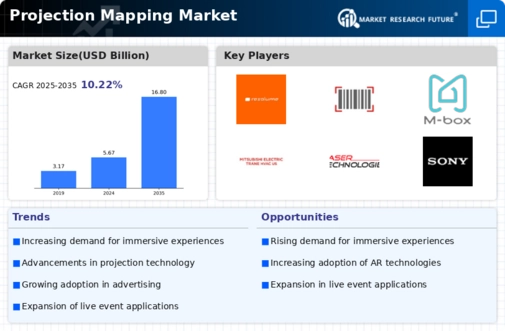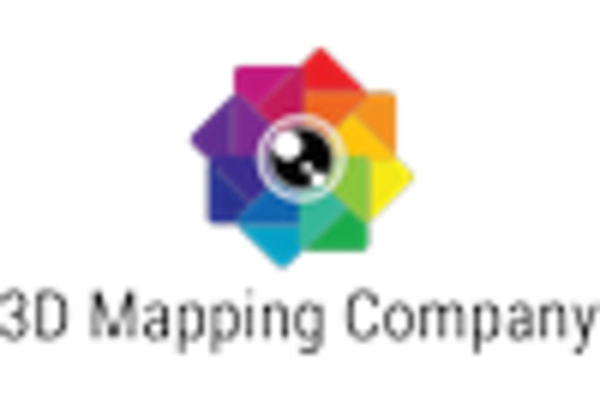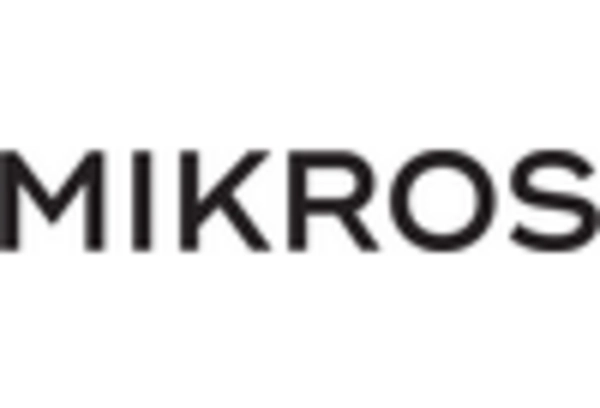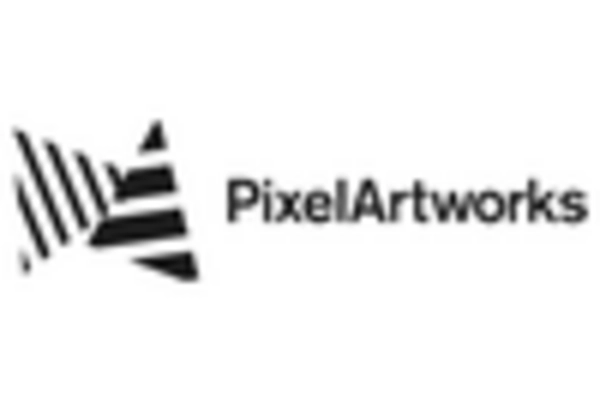Expansion of Smart City Initiatives
The Projection Mapping Market is benefiting from the expansion of smart city initiatives, which aim to enhance urban environments through technology. Cities are increasingly adopting projection mapping for public art installations, cultural events, and urban marketing campaigns. This trend is supported by data indicating that investments in smart city technologies are projected to exceed 2 trillion dollars by 2025. As municipalities seek to engage citizens and promote tourism, the demand for projection mapping solutions is likely to rise. This expansion not only enhances the visibility of the Projection Mapping Market but also encourages collaboration between technology providers and city planners to create innovative urban experiences.
Growth in Live Events and Entertainment
The Projection Mapping Market is significantly influenced by the growth of live events and entertainment. Concerts, festivals, and theatrical performances increasingly incorporate projection mapping to create stunning visual effects that enhance audience engagement. This trend is supported by data indicating that the live events industry is expected to reach a valuation of over 1 trillion dollars by 2026. As event organizers seek to provide memorable experiences, the demand for advanced projection mapping solutions is likely to rise. This growth not only benefits the entertainment sector but also stimulates innovation and competition within the Projection Mapping Market, as new technologies and techniques are developed to meet evolving consumer expectations.
Rising Demand for Immersive Experiences
The Projection Mapping Market is witnessing a notable increase in demand for immersive experiences across various sectors. As consumers seek more engaging and interactive content, businesses are investing in projection mapping to enhance their marketing strategies. This trend is particularly evident in the entertainment and advertising sectors, where brands utilize projection mapping to create captivating visual displays. According to recent data, the market for immersive experiences is projected to grow at a compound annual growth rate of over 20 percent in the coming years. This growth is likely to drive further innovation within the Projection Mapping Market, as companies strive to differentiate themselves through unique visual storytelling.
Increased Adoption in Retail Environments
The Projection Mapping Market is experiencing increased adoption in retail environments as brands seek innovative ways to attract customers. Retailers are utilizing projection mapping to create dynamic displays that showcase products and enhance the shopping experience. This strategy is particularly effective in creating a memorable brand presence, as it allows for storytelling through visuals. Data suggests that retailers who implement projection mapping can see a significant increase in foot traffic and customer engagement. As the retail landscape continues to evolve, the Projection Mapping Market is likely to expand, driven by the need for differentiation in a competitive market.
Technological Advancements in Projection Equipment
Technological advancements in projection equipment are a key driver of the Projection Mapping Market. Innovations in projectors, software, and hardware are enabling more sophisticated and high-quality projections. The introduction of 4K and 8K resolution projectors, along with improved mapping software, allows for greater detail and creativity in projection mapping projects. This evolution in technology is likely to lower barriers to entry for smaller companies, fostering a more competitive environment. As these advancements continue, the Projection Mapping Market is expected to grow, with new applications emerging across various sectors, including education, art, and corporate events.
















Leave a Comment